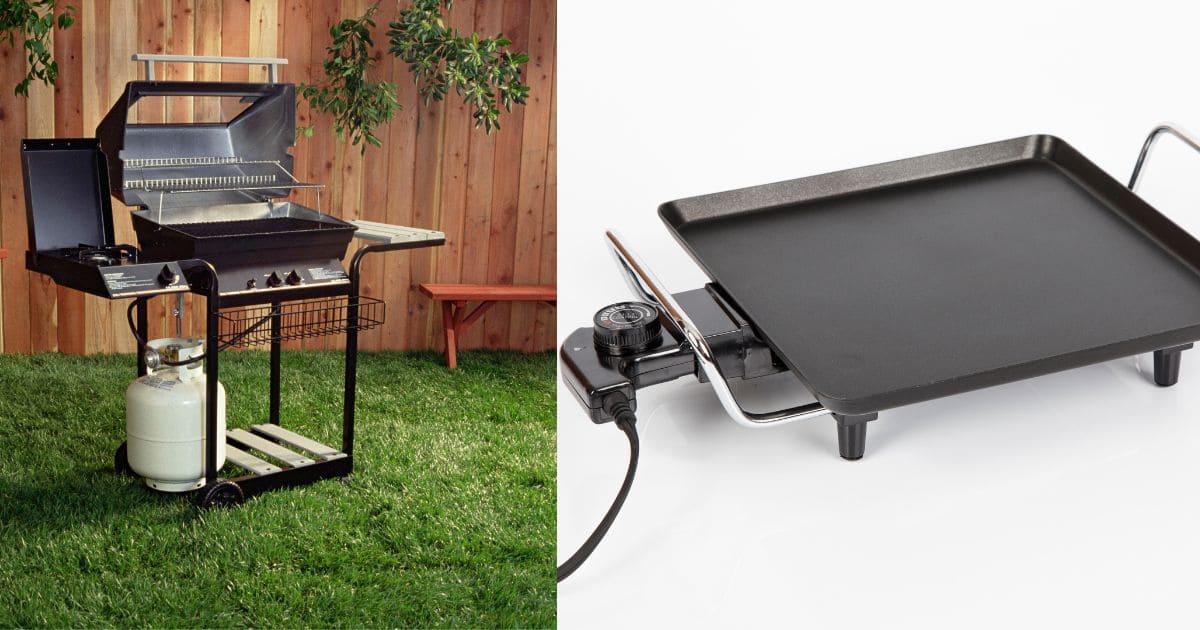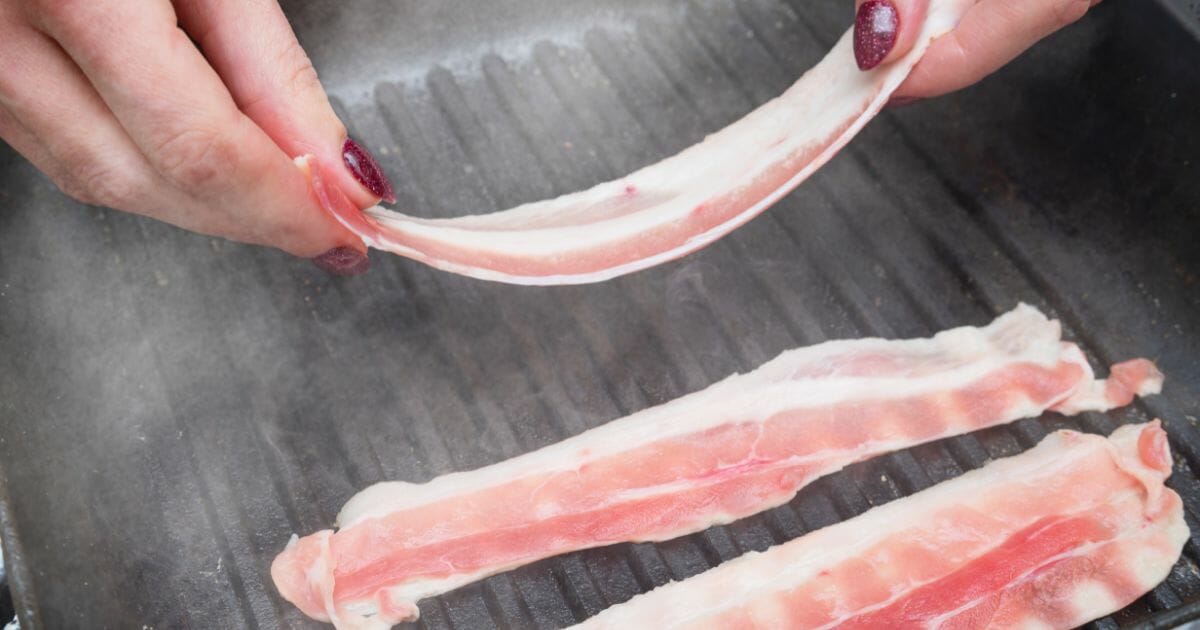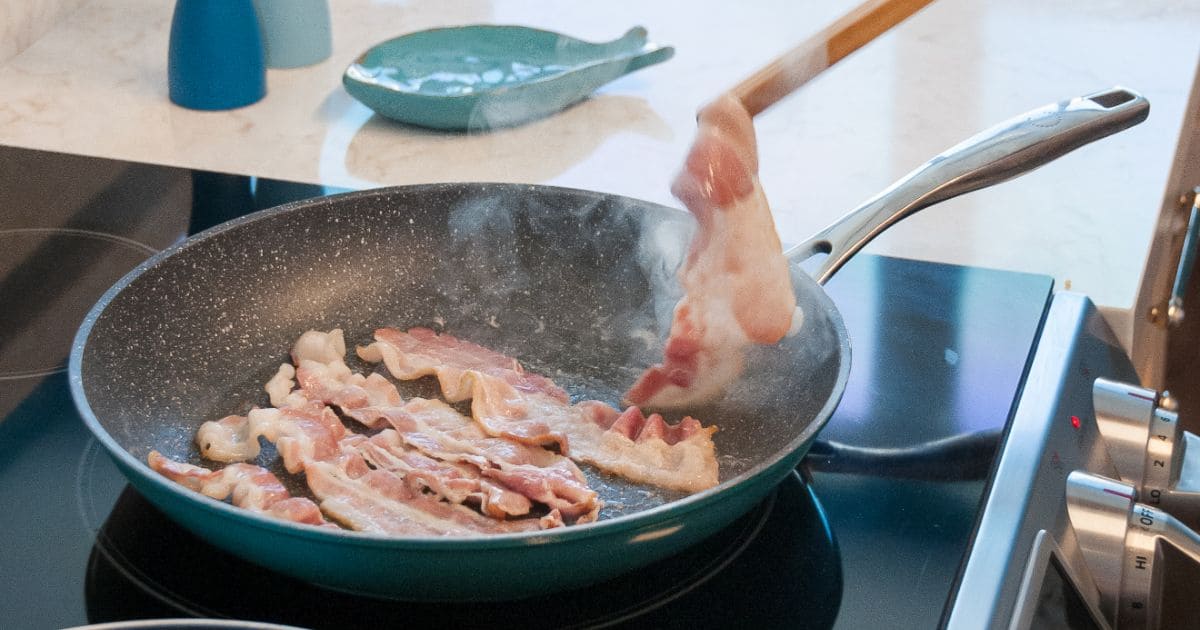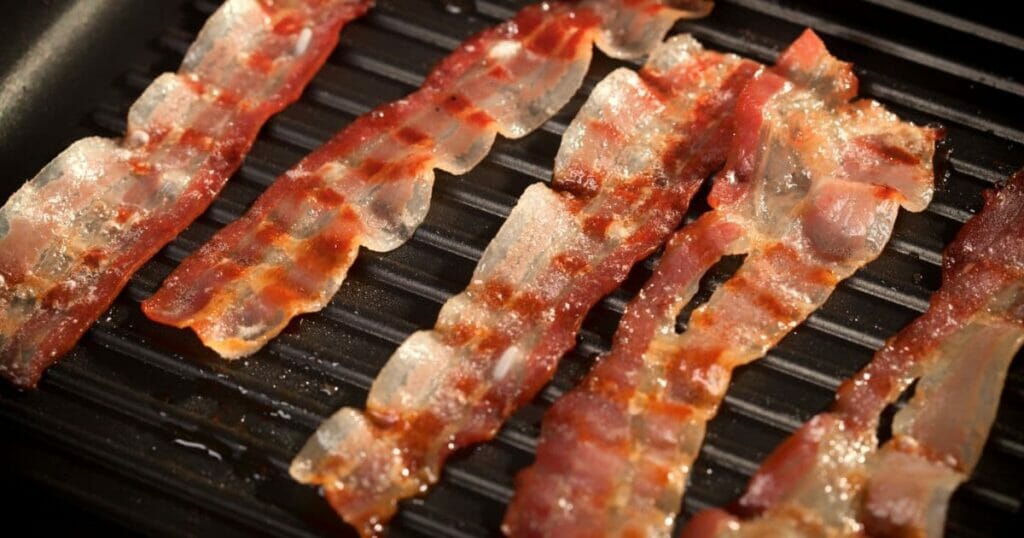Morning and bacon—sounds like a dream combo, right? Yet, sometimes, that dream gets a little, well...crispy in the wrong ways. We've all messed up a batch or two: undercooked slices that are too chewy or those overdone ones that simply crumble apart.
It's frustrating when what you envisioned as a delightful morning treat turns into a culinary misstep. So, what's the ideal bacon griddle temp for a savory outcome? Aim for medium heat, typically between 325°F to 375°F (163°C to 190°C).
This range ensures consistent results, balancing the fat rendering and achieving a desirable crisp without burning.
This article will dive into the nuances of cooking bacon to perfection. Learn the best practices, tips, and tricks to ensure every strip is a culinary triumph.
Blackstone vs. Electric Griddles

When it comes to cooking bacon, there are two main types of griddles to choose from: Blackstone and electric. Both have their pros and cons.
Blackstone griddles are great for even heat distribution, which is important when cooking multiple strips of bacon at once.
They also have a seasoned steel surface that can give bacon a slightly different, more savory flavor. However, Blackstone griddles are primarily used outdoors, so they're not ideal for indoor cooking.
On the other hand, electric griddles provide precise temperature control, ensuring your bacon cooks exactly how you like it.
Their compact nature and portability mean they fit easily on kitchen countertops. Plus, most electric griddles have a non-stick surface, making them easy to clean.
If you crave a robust outdoor cooking experience and need to serve many, the Blackstone griddle might be your best bet. But if you prefer controlled, indoor cooking with a straightforward cleanup, an electric griddle would be more fitting.
Griddle Care
Using your griddle is just half the story: maintaining it ensures its longevity. A bench scraper or metal scraper is essential for lifting off those stubborn bits without harming your griddle's surface.
After cooking bacon, it's vital to clear away the grease, as leftovers can affect the taste and the griddle's non-stick surface.
To preserve that precious non-stick coating, avoid harsh scrubbers. A soft sponge with mild soap does the trick. Simple care routines can make your griddle last and keep your bacon tasting just right.
How to Cook Bacon on a Griddle

Cooking bacon on a griddle is a classic technique that yields perfectly crispy and evenly cooked strips every time. The expansive, flat surface of a griddle offers an ideal cooking area for bacon, ensuring that each strip has ample space and cooks uniformly.
Preparation Steps
- Start with fresh, high-quality bacon. Whether you prefer thick-cut or thin, ensure it's fresh for the best flavor.
- Allow the bacon to sit out for about 15-20 minutes. Cooking bacon at room temperature ensures even cooking.
- Whether you're using an electric griddle or a traditional one, always preheat it. This reduces the chance of your bacon sticking to the surface.
Bacon Griddle Temp: Finding the Sweet Spot
One of the crucial aspects of griddle cooking is nailing the perfect temperature. For bacon, you don't want it too hot, lest you burn your strips, nor too cool, or they'll just limp along without achieving that desired crispness.
The ideal bacon griddle temp ranges between 325°F to 375°F (163°C to 190°C). Within this range, the bacon cooks steadily, rendering its fat without burning.
While bacon isn't as prone to foodborne illnesses as some other meats, risks remain if it's undercooked or mishandled. Consuming undercooked bacon can lead to food poisoning, causing symptoms like vomiting and fever.
If you have an infrared thermometer, use it to monitor the griddle's surface temperature. If not, you can gauge it by placing a strip on the griddle. If it sizzles upon contact, you're in the right range!
Cooking Process
- Place your bacon strips on the griddle, ensuring they don’t overlap. Overlapping can cause uneven cooking.
- As the bacon starts to curl and the edges brown, that's your cue to turn them over. A good pair of tongs will be your best friend here.
- As the bacon cooks, it'll release fat. This is a good thing! Not only does this fat prevent sticking, but it also imbues the bacon with more flavor. However, ensure your bacon isn’t swimming in grease. If there’s excess, consider draining it off.
- Once both sides have achieved a golden-brown hue and the desired crispness, remove the bacon strips and place them on a plate lined with paper towels. This trick will help in soaking up any residual grease.
- Feel free to sprinkle some brown sugar or maple syrup on your bacon during the last minute of cooking for a sweet twist!
Tip: If you have a steel griddle, ensure it's well-seasoned to add an additional layer of flavor to your bacon. Plus, always handle hot grease with care. If you're draining it, ensure you use a heatproof container.
5 Alternative Ways to Cook Bacon

Whether you're a seasoned chef or someone who only visits the kitchen on weekends, there's a method to cook bacon that aligns with your culinary comfort zone.
Stovetop Pan-Frying
By far the most traditional method, pan-frying offers direct control over how crispy or chewy you want your bacon. Lay your bacon strips on a cold skillet, ensuring they don't overlap, then turn the heat to medium.
This gradual heat ensures that the bacon fat renders perfectly, allowing the meat to cook in its own grease.
Tip: A cast-iron skillet is often the go-to tool due to its heat retention properties. However, any heavy-duty pan will suffice.
Oven
An oven takes away the need for constant supervision. Preheat your oven to 400°F (204°C). Arrange the bacon on a baking sheet lined with parchment paper or aluminum foil for easier cleanup.
Depending on your bacon's thickness, set your timer: approximately 12 minutes for a thin cut and up to 20 minutes for those thicker slices.
The even heat distribution of the oven ensures every inch of your bacon is cooked uniformly. This method is particularly handy when cooking for a crowd or wanting multiple strips without the splatter mess.
Microwave
If you're in a rush, this is your method. Layer bacon between paper towels on a microwave-safe plate. This helps in absorbing the excess grease and prevents splattering inside the microwave. Depending on the thickness, cook for 4-6 minutes, checking midway.
Note: While the microwave may not provide the exact same crispy texture as other methods, it's a lifesaver when you're short on time.
Grilling
Grilling bacon imparts a smoky flavor that's unmatched. Place the bacon strips perpendicular to the grill grates so they don’t fall through. Medium heat works best to ensure the bacon cooks without burning.
Pairing Suggestion: Grilled bacon is the ideal companion for your summer burgers. Its smoky undertone elevates the overall burger experience.
Air Fryer
If you're health-conscious but still yearn for that crispiness, an air fryer is your ally. With minimal oil, you get results akin to deep frying. Lay the bacon in a single layer and cook at 350°F (177°C) for about 10 minutes, adjusting the time based on your desired crispness.
Storing and Preserving Your Bacon
So you've got some extra bacon on hand? Lucky you! Whether it's raw or cooked, proper storage can make all the difference in maintaining its flavor and safety. Let's dive into the do's and don’ts.
How to Store Raw Bacon and Cooked Bacon
For raw bacon, always take note of the expiration date upon purchase. If you intend to use it within a week, refrigeration is suitable. For longer storage durations, consider the freezer. Ensure it's either kept in its original packaging or vacuum-sealed to minimize freezer burn.
For cooked bacon, store it in an airtight container or a resealable bag and refrigerate. It should remain fresh for up to a week.
If you need to store it longer, freezing is also an option. To make future use convenient, separate the bacon strips with parchment paper before freezing.
Also, be cautious of cross-contamination; keep raw bacon away from other foods, and wash your hands and cooking surfaces thoroughly after handling.
Airtight Containers vs. Bacon Pack: Which Is Better for Shelf Life?
While the bacon pack, especially if resealable, offers convenience, airtight containers might slightly outperform in terms of preserving freshness.
They effectively seal out moisture and air, extending the bacon's shelf life. Using airtight containers also helps prevent any odor transfer within the refrigerator.
Repurposing Leftover Bacon and Bacon Grease
On the off chance you have leftover bacon, it can be repurposed in various dishes like salads or scrambled eggs. As for bacon grease, it's a valuable cooking ingredient.
Once strained, store it in a jar in the refrigerator and use it as a replacement for butter or oil, imparting dishes with a distinct smoky flavor.
Warning: Never pour hot grease down the sink, as it can solidify, leading to blockages.
If you're discarding it, let it solidify in a container and then toss it in the trash. Always keep it out of reach of children and pets, and be cautious of splatters to avoid burns.
Final Words
Getting the perfect crispy slice boils down to understanding the right bacon griddle temp and technique. This article takes us beyond just the temperature; it's about the choice of the griddle, how it's maintained, and the safety measures employed.
Whether you're a novice or a seasoned chef, keeping these principles in mind will elevate your bacon-cooking game.
About the Author
Tamara J. Sims
EXECUTE CHEF
As a seasoned kitchen and food writer, Tamara has a remarkable ability to weave words together, transporting readers to the heart of the culinary world. Tamara’s articles are written with an engaging blend of insightful commentary, honesty, and real-world examples based on personal experiences. She has the ability to captivate seasoned food enthusiasts and novice cooks alike.
SeaRanchLodge.com is a participant in the Amazon Associate program and will earn from qualifying purchases.


